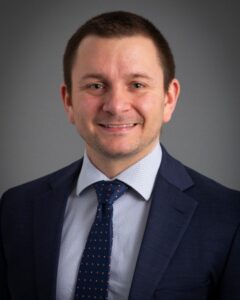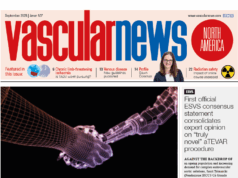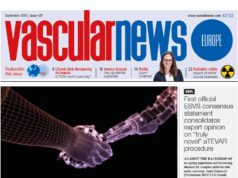
“Spinal fluid drainage should be considered when the risk of spinal cord injury from the procedure is greater than the risk of severe complications from spinal fluid drainage.” This was one of the concluding findings of a study presented during the 2025 Vascular Annual Meeting (VAM; June 4–7 June, New Orleans, USA) by submitting and presenting author Lucas L Skoda (University of Wisconsin, Madison, USA).
Skoda was presenting the results of a study that aimed to review the use of prophylactic spinal fluid drainage (SFD) for the prevention of spinal cord injury (SCI) in open and endovascular thoracic (TAA) and thoracoabdominal aortic aneurysm (TAAA) repair and evaluate the complications of SFD.
Skoda and colleagues’ study included all patients treated at a single institution from 1987–2023 for open and endovascular TAA and Crawford type I, II, III and IV TAAA. Skoda noted that prophylactic SFD was used in open TAA and TAAA surgery and endovascular surgery planning >12cm of aortic coverage.
SFD was part of a multifactorial strategy to reduce SCI, and cardiac anesthesiologists placed all drains and managed spinal fluid drainage according to a strict protocol, including rescue drains placed for delayed SCI, the presenter detailed.
Of 1,445 patients included in the study, Skoda shared that 1,007 had prophylactic SFD, a figure that included 777 open repairs and 230 endovascular repairs.
Outlining the study results, Skoda revealed that six (0.6%) patients had neurologic complications from spinal fluid drainage—five (0.77%) in open repair and one (0.43%) (0.43%) in endovascular repair. Four of the six patients with neurologic deficits from SFD died.
Concluding, Skoda stated that severe complications from SFD should be defined as those resulting in neurologic deficit, and that the appearance of bloody fluid during SFD is an indicator of possible intracranial blood, but without neurologic symptoms it is benign.
The presence of prophylactic SFD can be performed with “acceptable risk of severe complications” in open and endovascular repair, Skoda continued, adding that safer SFD requires “consistent teams and management protocols.”
The senior author for this paper was Martha M Wynn (University of Wisconsin School of Medicine & Public Health, Madison, USA).













